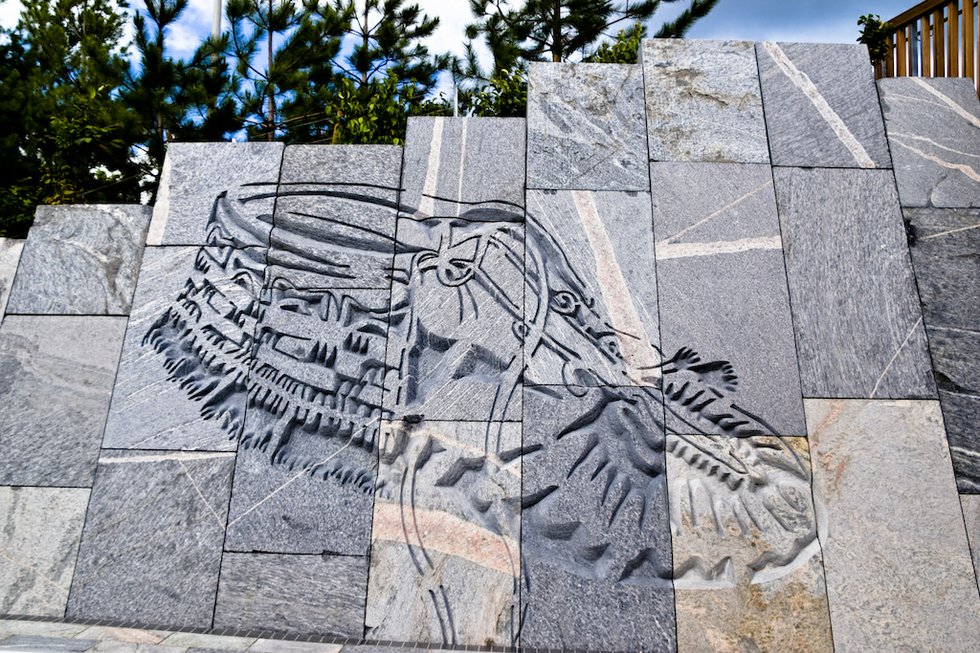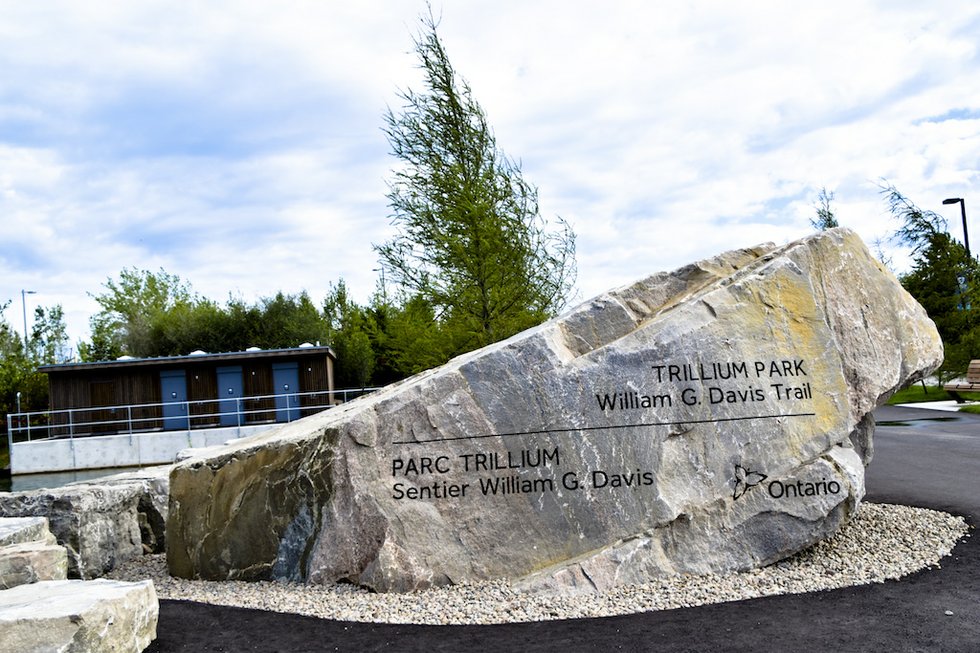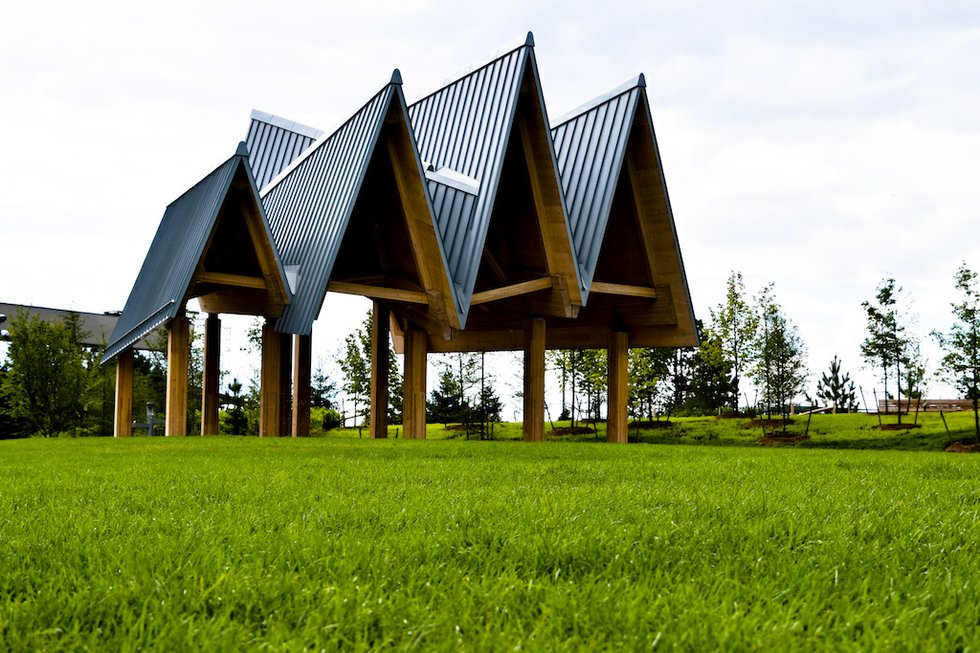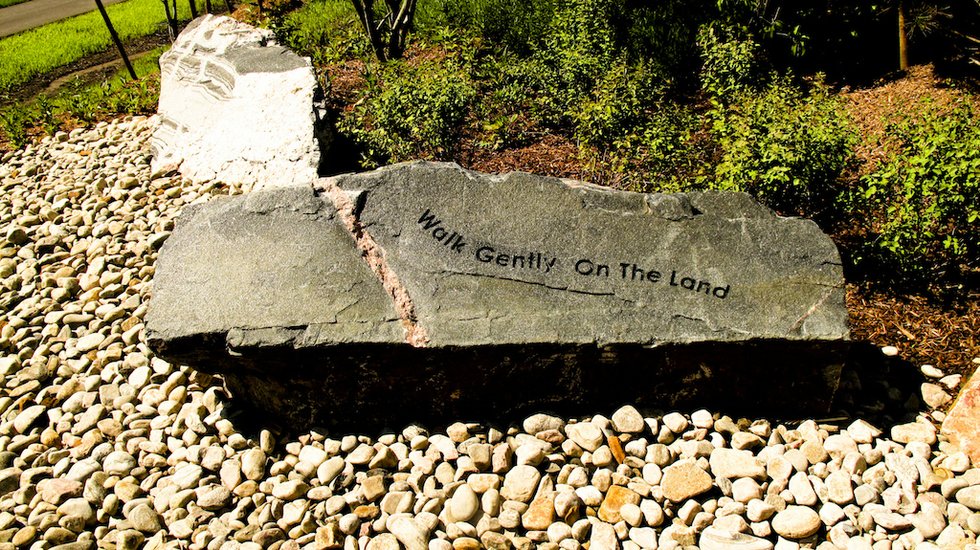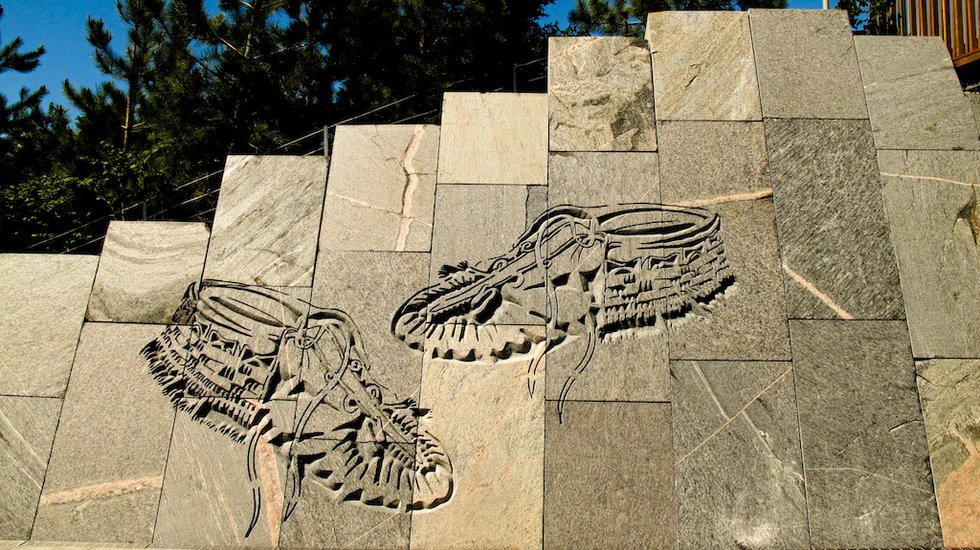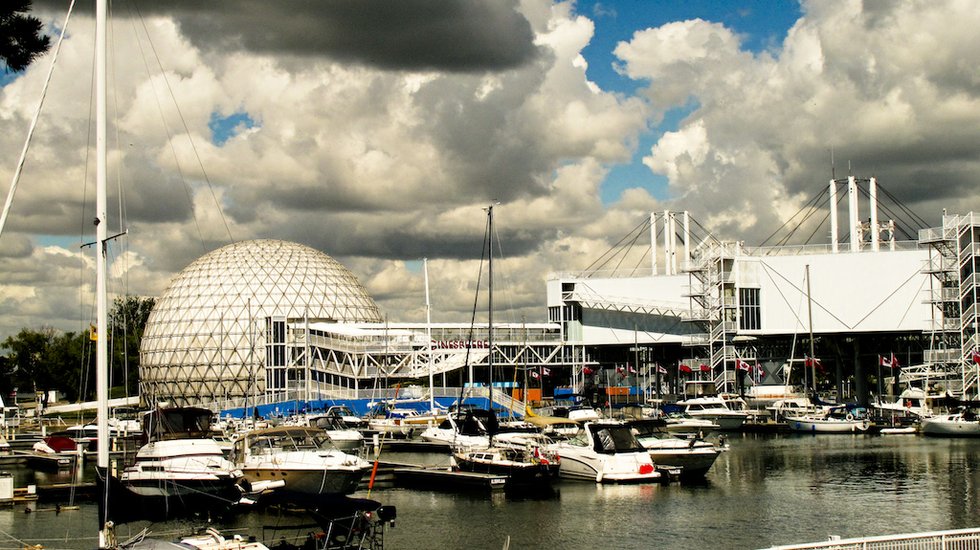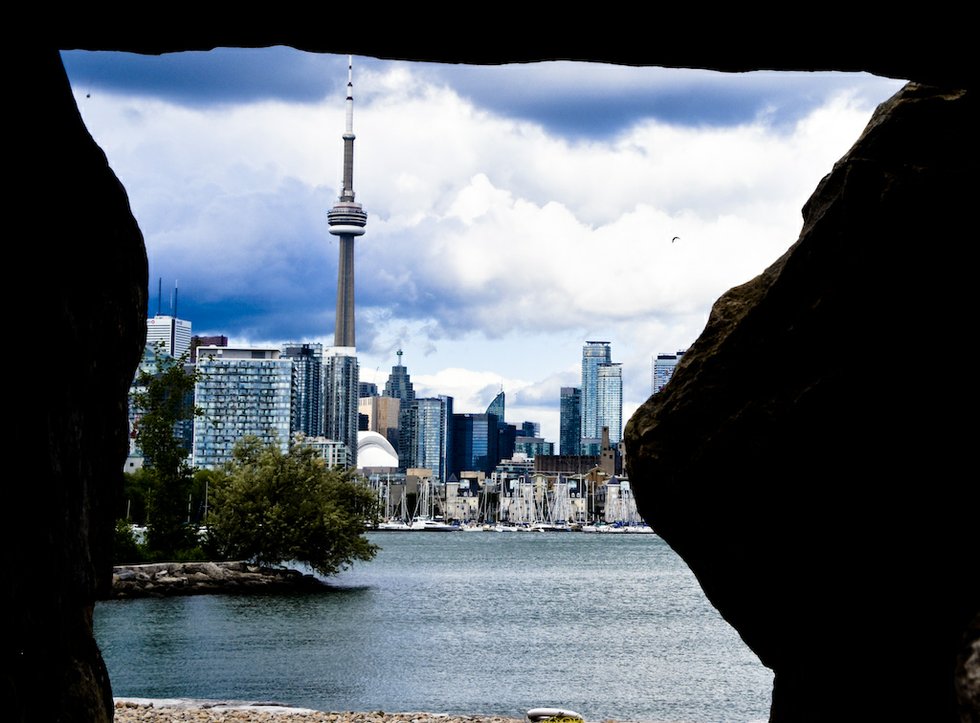
South of the Inukshuk on the lakeshore east of Ontario Place is the city’s newest green space, the Trillium Park and William G. Davis Trail.
Entering between slabs of Canadian Shield, engraved with giant moccasins that tell us First Nations lived here thousands of years before Canada 150, feels like sliding through a mountain pass. Beyond that there are rocks that ask us, in English and in French, to walk lightly on the land. Then we are in.
Designed by LANDInc Landscape Architects, Trillium Park is, at once, a modest and spectacular marvel: 1.3 kilometres of winding trail, three hectares of hilly grassland, forests of native trees and a beach with fabulous views of the city.
There are no toys here: no playgrounds, no sports fields. But there is a pavilion that might be Canada’s most striking rain shelter. And a rock wall (supplied by B.O.R. Aggregate Quarry of Dwight and assembled by the Stone Carvers of Muskoka) with caves and mini-cliffs for climbers, toddler age and up, for relaxing with a book or schmoozing with a lover.
There are also other reminders of who were the first people here: saplings with bent trunks that will grow into marker trees, like those planted by Indigenous peoples that identified paths through the wilderness in pre-colonial times and still do, where they are still standing.

Trillium Park marker tree.
Trillium Park is a magic carpet that takes us to what was once Ontario’s favourite playground – architect Eb Zeidler’s Ontario Place, his most joyful, spectacular and best-loved work, with its geodesic Cinesphere and pods rising on stilts out of the water. When it opened in 1971, the park attracted 3 million visitors. But interest faded and by the time it closed in 2012, attendance had fallen to 300,000 per year.
That was the year John Tory was appointed by the province to propose ideas that would revive Ontario Place and allow it to remain open year-round.
Estimating that it would cost $100 million to restore – and another $100 million to extend a streetcar line to it that would also serve nearby BMO Field – Tory recommended a re-invention: “Condos on the west island, a hotel or resort, corporate headquarters or educational research institute on no more than 15 per cent of the prime waterfront site.”
Such money-making development would, Tory promised, allow revitalization of Ontario Place that would include restoration of its beloved and much missed Forum.
But the plan foundered amid public backlash to Tory’s condo proposal and in 2014 the Ministry of Tourism, Culture and Sport produced its own five-point Long-term Vision for Ontario Place. It rejected the idea of homes on the west island – and the casino that Mayor Rob Ford promoted two years earlier. And called instead for a “culture, discovery and innovation hub” with “Blue Park” around the Cinesphere and its elevated pods, a “Canal District” with landscaped pedestrian bridge across Lakeshore Boulevard into Exhibition Place, a “Celebration Common” inspired by the performance legacy of Ontario Place (would that include a revived Forum?) and a Park and Trail.
The last two have now been realized, but the rest of the dazzling package? Who knows.
Trillium Park and the William G. Davis Trail, created on what used to be a parking lot, give us access to Ontario Place that we have not had since 1977.
From a distance, Zeidler’s masterpiece looks as glorious as ever. Close up, though, it’s tired with pavilions locked and peeling paint and rusting like the set of a Mad Max movie or relic of a dead future civilization.
Ontario Place’s potential remains, but it’s hard to imagine any government spending hundreds of millions on it without private sector participation. That would be risky, though. It was private sector involvement that replaced the Forum in 1995 with the markedly non-Zeidler Molson Amphitheatre that is now the Budweiser Stage.
Then there’s the competition. In Toronto’s arena of dream projects, Ontario Place seems less a priority than rerouting the Gardiner to Bring Back the Don, development of the Port Lands, a Rail Deck Park over the tracks from Bathurst Street to Blue Jays Way and the revitalization of Exhibition Place, that’s looking more forlorn these days with parking lots that are most of the time empty and the only activity the construction of the incomprehensible Hotel X.
It’s easy to dismiss projects as grand as Ontario Place as frivolous, but cities are built on such dreams.
Is it wishful thinking to imagine Ontario Place not only representing but creating the future? Or to imagine it bursting with creativity as it rings again with the shouts and screams of delighted children, while also being home for resident innovators?
Is it foolish to dream of lounging on the grass of a reborn Forum, where the music of the Toronto Symphony Orchestra mingles strangely but happily with the rumble of traffic on the lakeshore and the jeers and cheers erupting from nearby BMO Field?
When will Ontario Place be great again? The search is on for an innovative partner to transform the west island.
Meanwhile, Trillium Park and the William G. Davis Trail are open year round to give us back some bliss.

From left, LANDinc Landscape Architects founding principal Patrick Morello, senior principal Walter Kehm and designer Bruce Gilchrist.
news@nowtoronto.com | @nowtoronto
